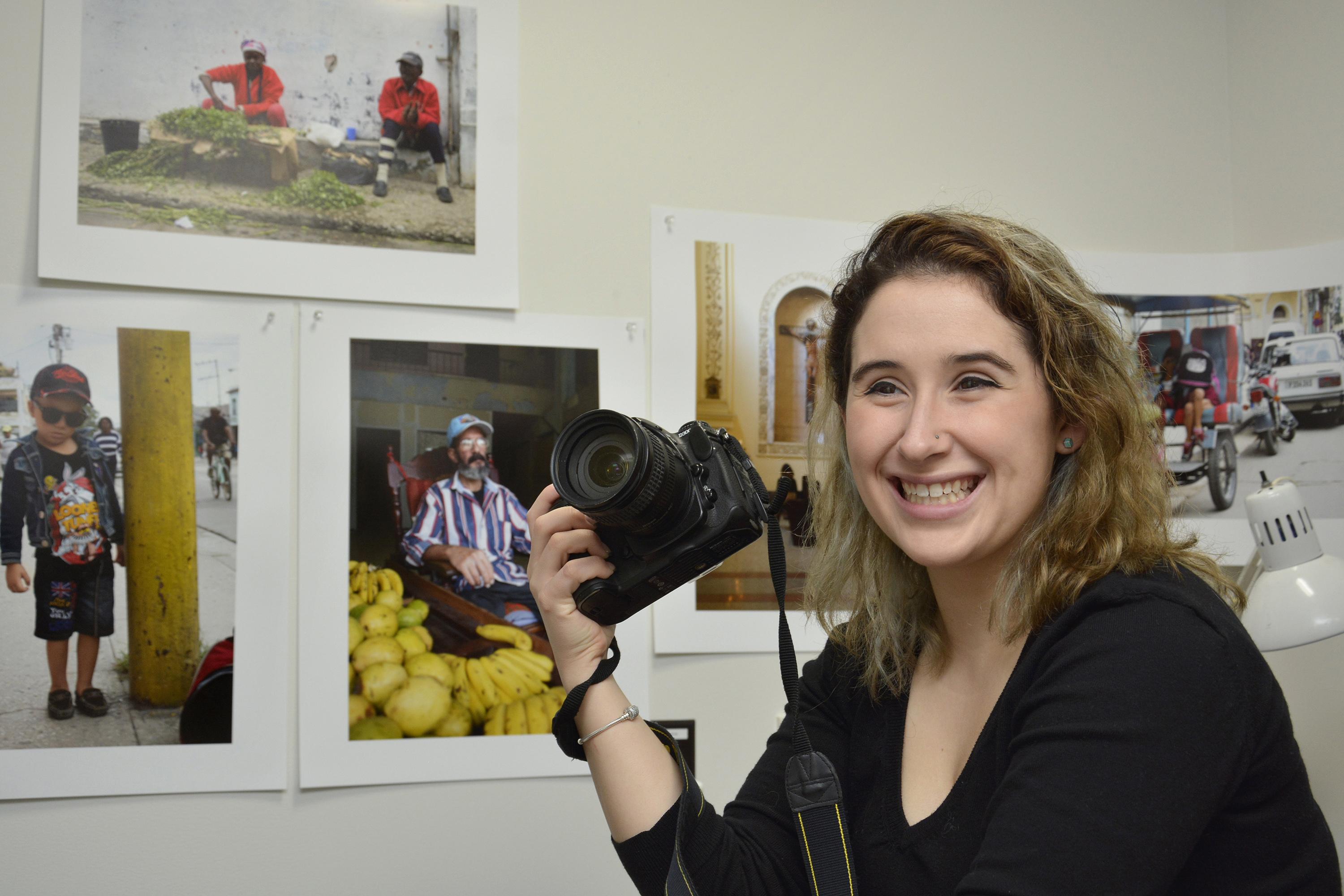Cuba close-ups—SUNY Oswego senior Samantha Kaye traveled to Cuba in January with classmates in the college’s “Cuban Culture Through Photography and Music” quarter course, staying an additional week to work on her photography honors thesis and enjoying an intimate look at neighborhoods not normally on tourists’ itineraries.
During a historic era in Cuba-U.S. relations, SUNY Oswego student photographer Samantha Kaye traveled to the island nation in January, enjoying extraordinary access facilitated by her teacher’s guide to capture neighborhood images of contemporary Cuban culture.
A senior graphic design major and photography minor, Kaye will present a preview of this, her honors thesis project, on April 13 during Quest, SUNY Oswego’s annual symposium to celebrate student, faculty and staff scholarly and creative activities. An exhibition of her work, along with that of other college students, will open April 29 at the Art Association of Oswego near Fort Ontario.
Quest is free and the public is welcome. Parking is free on campus Wednesday, April 13, though attendees need to observe handicap and other specific space-by-space restrictions.
Kaye’s adviser, art department faculty member Julieve Jubin, has made many trips to Cuba, and travels there with students such as Kaye each January in conjunction with her and music faculty member Eric Schmitz’s course, “Cuban Culture Through Photography and Music.” Jubin has exhibited her own photographic work—which features digital and experimental approaches to images—in Cuba, Europe, Canada and the United States.
Jubin’s influence on Kaye’s project was evident. In the week following their 12-day course-related trip to Cuba, Kaye used the teacher’s own Cuban photo assistant, JuanMa (short for Juan Manuel) Cueto, to explore neighborhoods in Havana and three other cities rarely seen by tourists. Jubin, who also assisted Kaye that final week, said the student’s pre-travel research, including meetings with Lisa Glidden of the political science faculty and Jubin, was important, but that it’s difficult to understand Cuban culture until you witness it. Kaye agreed.
“I started out wanting to examine American ideology around Cuba,” Kaye said. “The culture has been exotified and mystified for decades,” Kaye said. “Once the borders were closed to Americans (in the early ‘60s), this only perpetuated the idea that Cuba is a Garden of Eden you can’t touch.”
‘Highlight of trip’
Kaye said she found extraordinarily open and trusting people who defy stereotype.
“I wanted to find ‘the authentic Cuban experience,’” Kaye said. “What I found is that phrase is different for different Cubans. It’s hard to find precisely what Cuba is to Cubans, but I tried.”
Utilizing an approach suggested by Jubin—focusing on one cultural aspect, such as religion, per day—the Staten Island native took her camera through Centro Habana and other working-class neighborhoods in the capital and those of Trinidad and other cities.
“I never had anyone shy away from the camera,” Kaye said. “They were so cool with it. I think they really want people to know who they are.”
One experience during the trip exemplified the Cuban welcome and openness, she said. During the earlier part of the trip, Kaye traveled with SUNY Oswego music students to a dance studio in the city of Matanzas that is reputed to have been the birthplace of the rumba.
“There was street rumba going on. They wanted us to join,” Kaye said. “We danced and danced. I consider it the highlight of this trip. It was such a rich cultural moment. It’s the people who make Cuba.”
The Quest symposium, using much of Marano Campus Center, will feature dozens of presentations 9 a.m. to 5 p.m., a scholarly posters session from 1 to 1:45 in the arena and other events, such as inductions for the Beta Gamma Sigma business honor society—honoring class of 1983 alumnus Robert P. Garrett, managing partner for the New York office of KPMG, a Big Four accounting firm.
For more information and an upcoming schedule, visit oswego.edu/quest.




